ggggallery™ is an inter-
disciplinary "Project Space"
— by shifting exhibitions in conjunction with lectures, talks and workshops, we will explore visionary movements within architecture at the intersection of experiment and technology.
Exhibitions
Current exhibition
We are moving, please email us for more info.
---
Exhibition archives
PERSISTENT MODEL #2, dynamic pressure systems
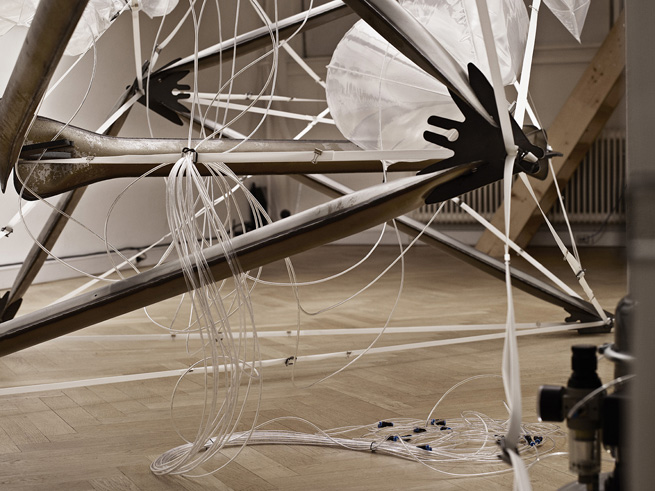
Credits
Collaborators:
Phil Ayres, Anders Krogdal Nielsen, Roxana Aron, Kristjana Sigurdardottir – CITA
Funded by:
Dreyers Fond, The Royal Danish Academy of Fine Arts, School of Architecture
Industrial Support:
Beyer Teknik, Amcor, FESTO
Special thanks to:
Ali Tabatabai, Jørgen Hauberg, Vibber Hermansen, KAM at KADK (Mads Bartholin Johnsen, Torben Valerius, Henrik Litske, Lars Tingskov Mikkelsen), Olga Popovich Larsen, Rachel Cruise, Sarat Babu, Chris Paxton.
About this exhibition
Tensegrity structures and Inflatable membranes can be considered analogous. They can both be described as pressure based systems in which a coherent envelope is tensioned through compressive force in order to achieve a state of self-equilibrium.
Persistent Model #2 is a full-scale speculative prototype that employs two classes of inflatable component – one ‘hard’, irreversible and pre-inflated (metal); one ‘soft’, reversible and continually pressurized (laminate foil). The principles of tensegrity are evident at two distinct scales.
Persistent Model #2 adopts the topology of Kenneth Snelson’s Planar Weave tensegrity (which met an untimely end after a gust of New York wind blew it off the parapet of his York Avenue studio during a photographic session in 1960). Particular characteristics of Planar Weave are reconsidered with an architectural sensibility that searches to establish synergies between structural logic, component demands and material dynamics, as well as addressing issues of skin and local specificity through the fabrication of variety.
Persistent Model #2 builds upon an existing body of research knowledge developed at CITA in free-form metal inflation, the notion of Persistent Modelling and a sustained critical investigation of the roles digital tools can play in extending the ways in which we think, design, realise and experience architecture.
---
SERIAL BRANCHES, and other stories

Credits
Collaborators:
Christoph Schindler, Dr. sc. ETH, Dipl.-Ing. Architekt – schindlersalmerón
Martin Tamke, The Royal Danish Academy of Fine Arts – CITA
Anders Bülow – Skovskolen, KU
Ali Tabatabai – WEM3
About this exhibition
schindlersalmerón is a Swiss furniture manufacturer. Much of their design work is driven by a fascination for material and joining technology. This exhibition tells five development stories from recent years.
The «Serial Branches» project is exclusively developed for the occasion of the exhibition at ggggallery. Within a 10-day workshop schindlersalmerón, in collaboration with 19 KADK students, have explored the contemporary potential of «Krummholz» (knee timber) – a desired material until 19th century, but swept away by industrialization and its standardization of processes and materials. The workshop questions whether contemporary information technology with its potential for individual fabrication allows for a new approach to the uniqueness that is offered to us by nature.
Students:Andreas Brunvoll, Jochen Brandhuber, Pedro Sainz De Vicuna, Anna-lydia Capul, Nella Näveri, Anders Bergqvist, Hugo Martinez, Laura Rajakorpi, Victor A. Velarde, Daniela Mitterberger, Augusto L. Zamperlini, Mija Simonsen, Carsten W. Jensen, Lars Kristian Madsen, Andreas Rasmussen, Andreas Schumann, Louise Nguyen, Mirunalini Bhuvanendra, Coco Vindahl
---
MATERIAL EQUILIBRIA, Variegated surface structures
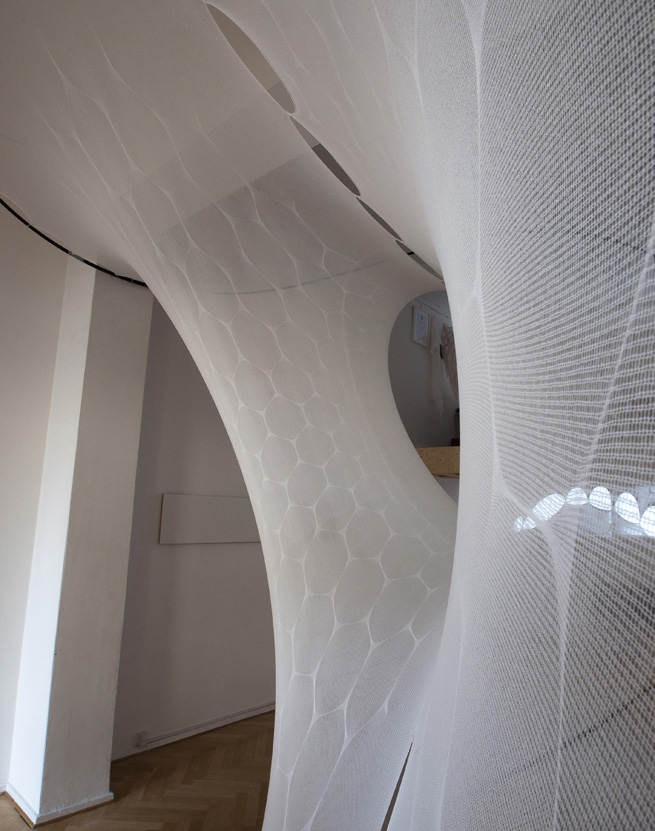
Credits
Collaborators:
Sean Ahlquist, Bum Suk Ko, Prof. Achim Menges (ICD, Stuttgart University) – ICD, Stuttgart University
Bettina Wörner (Walter Wörner GmbH & Co KG) – Walter Wörner GmbH & Co KG
Mette Ramsgaard Thomsen – CITA
Helene Jensen (Design- skolen Kolding) – Designskolen Kolding
Julian Lienhard (ITKE, Stuttgart University) – ITKE
About this exhibition
This installation, entitled MATERIAL EQUILIBRIA, exhibits research on the delicate and simultaneous relationship of articulated material behavior and differentiated structural form. This specific study, as a part of the doctoral research of Sean Ahlquist, investigates the variegation of knitted textile structures, a jacquard weave of shifting patterns and densities, as it influences the structuring of a tensile spatial surface. Through computational means, the micro-structure of the textile is varied to induce and direct particular organizational and structural behaviors across the meso-scale surface. The accumulated material phenomena are calibrated to derive an equilibrium which works in concert with the resistance of an actively bended glass-fiber macro-scale structure at the boundary. The resulting form actively exhibits such behaviors in the expression, the distension, of the interwoven fibers.
MATERIAL EQUILIBRIA, is a part of a larger body of research done by Sean Ahlquist focusing on the development of computational design methodologies and techniques which enable the generation of self-structured spatial forms through the generation of informed material behaviors.
---
Distortion II, Sound and Space defining surfaces
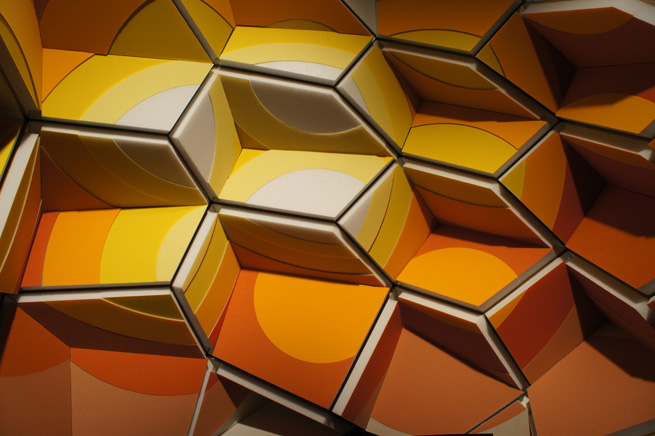
Credits
Collaborators:
Patric Gustafson, Magnus Gustafsson – Akustikmiljö
Martin Tamke, Brady Peters, Stig Anton Nielsen, Lisa Uhlmann – CITA
Niels Jakubiak Andersen, Hasse Selvig Sandell, Dave Stasiuk – Krydsrum Arkitekter
Søren Vestbjerg Andersen, Matthias Haase, Claus Møller Petersen – Grontmij A/S
Support:
The research project is sponsored by Kunstfonden, JJW Arkitekter, Grontmij A/S, Realdania and the Royal Academy of Fine Arts School of Architecture. Further support was provided by Sennheiser Nordic.
About this exhibition
Distortion II is both an acoustic architectural installation and a sound experience. The research creates new interfaces between acoustic science and the built environment by integrating sound performance, design and production. The installation is a complex surface that has been designed to create multiple visual and acoustic effects within a single, open space. Distortion II is part of a larger research project to develop new architectural tools that consider sound as key design parameter.
Today, many people live, learn, and work in open plan spaces. Distortion II demonstrates how an architectural surface can modify sound through the specification of geometry and material. The research project begins with questioning the currently accepted design strategy of acoustically homogeneous spaces; instead it suggests and explores the potentials of acoustically differentiated spaces. The concept of the acoustic subspace is introduced. This is defined as a zone within a larger space that can be differentiated through its acoustic qualities. Distortion II is designed specifically to explore two acoustic extremes: a sound-amplified zone, and a sound-dampened zone. Today, in architectural practice, acoustic performance is usually specified using a single criterion, reverberation time. However, hearing is a multi-dimensional experience and different activities require different sound qualities. This research project recognizes this fact and suggests that, if the factors that create differentiated acoustic spaces can be understood and controlled, then these factors can be embedded within design tools. The design of Distortion II uses various parametric design softwares, many custom-written computer programs, and advanced acoustic simulation software. The research produced during the Distortion II project demonstrates not only new methods for designing space- and sound-defining surfaces, but suggests new architectural and acoustic design goals in terms of how we experience sound in space.
---
Composite territories, Engaging graded material systems
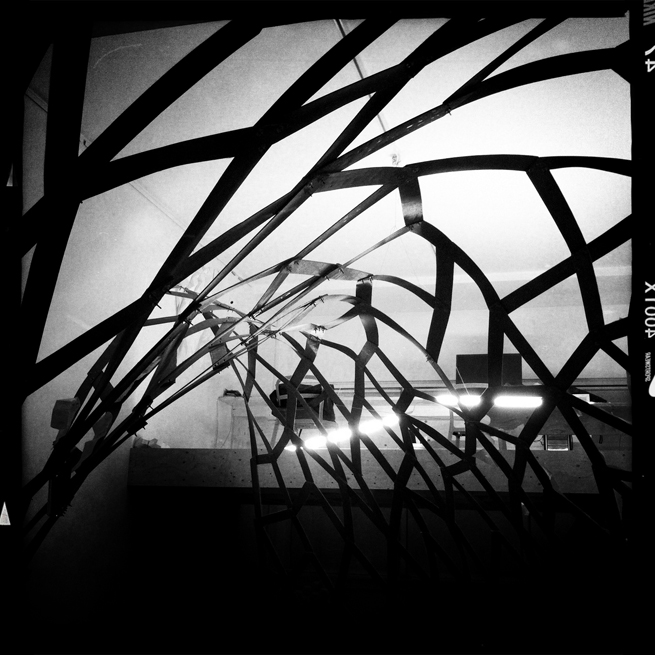
Credits
A research project by the Centre for Information Technology and Architecture (CITA) with Paul Nicholas and Martin Tamke in collaboration with Ali Tabatabai (Department 8 of the School of Architecture in Copenhagen)
About this exhibition
This exhibition explores how architects might simultaneously be designers of material as well as form.
Today, material innovation is increasingly occurring around the possibility to meet performance criteria via the design of material, rather than solely through geometric or mechanical solutions. Fibre reinforced composites in particular allow materials to be designed for a specific property and a specific context. But the idea that a property such as bending might be desired, rather than minimized, is new to architecture. So is the idea that material might be incorporated into the form-making process, rather than form being imposed upon it. The object of this exhibition is then to rediscover the capacity of a material to bend, not as failure or a shift from the normal but rather as something that can be tailored to specific design concerns.
---
Ambitions to grow, Vernacular strategies for spatial creations
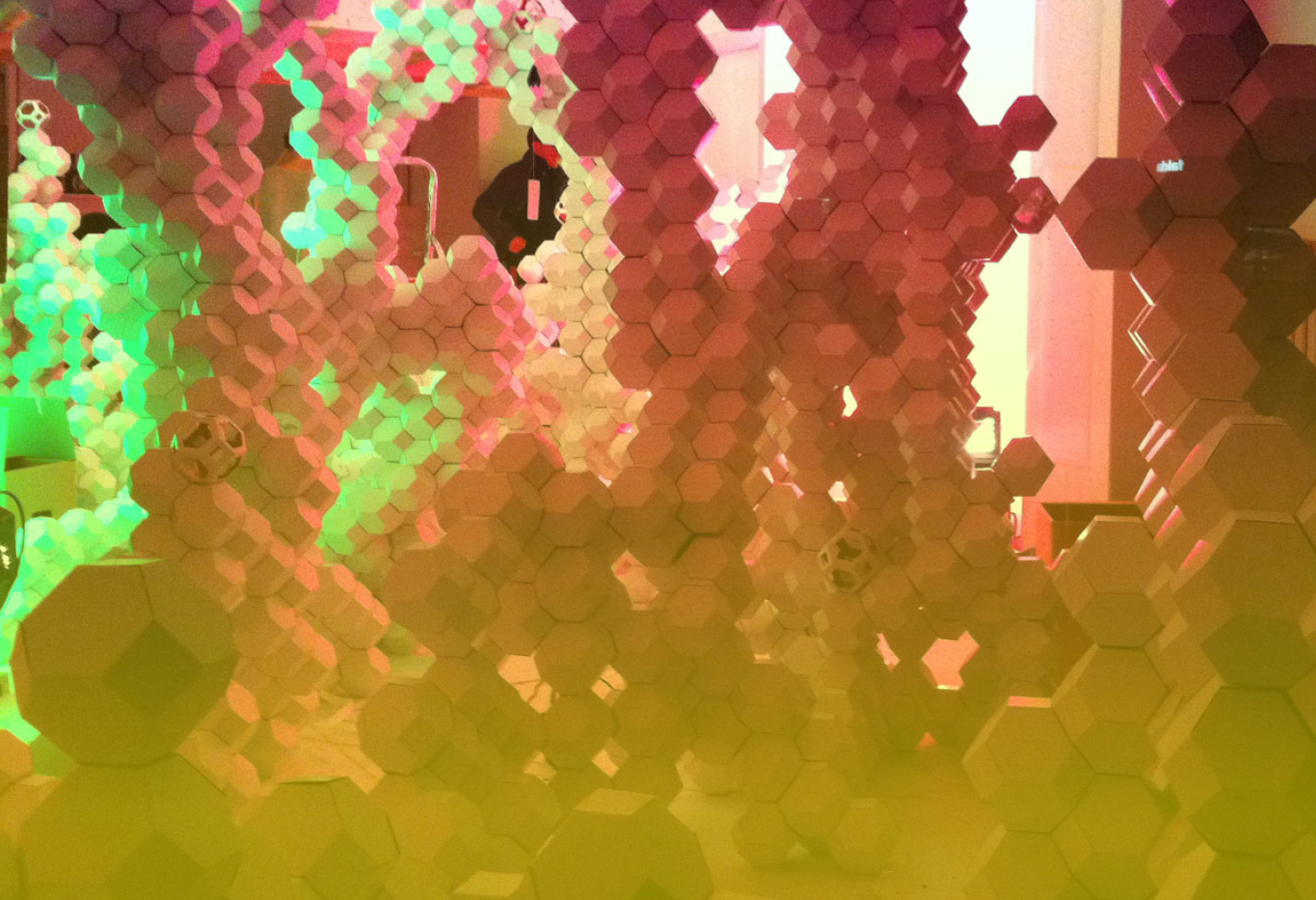
Credits
A research workshop by the Centre for Information Technology and Architecture (CITA) with
Petra Jenning, David Andreen (London)
Stig Anton Nielsen and Martin Tamke (CITA) in collaboration with the Department 8 (Ali Tabatabai) of the School of Architecture in Copenhagen.
CRESCIT – architectural research & design
In cooperation with smartGeometry
About this exhibition
The exhibition and the workshop behind it investigates real-time, agent driven approaches towards design in a collaborative and hands-on way.
Today’s building practice is at crisis as our design and building systems can’t take into account the increasing complexity and unpredictability of reality. In the search for an alternative we find approaches towards creation that are not linked to centralized control but rely on bottom-up decision making and emergence. We are puzzled by the fact that these self-organizing processes take place without direct communication and intent but rely on interaction on the level of geometry by independent agents. Constant transformation processes become the drivers for good design and performance within a field of competing goals.
The experimental workshop embraces these concepts of nature. Utilizing a system of space filling truncated octahedrons four groups worked in parallel towards competing objectives. Like termites each group had only local awareness, responding only to sensory input from their direct local environment. Where carefully planned and executed lines of action was exceedingly rare the outcome reflected the optimal for each groups design task negotiated through the process of building.
Going beyond biomimetics – merely copying the form or appearance – this workshop explores a physiomimetic architecture that learns from the processes that drive form in nature.
Events
Current exhibition
We are moving, please email us for more info.
---
Future exhibition
A list of future events will be posted here.
Meanwhile you can contact us for more info: hello[a]ggggallery.com
---
Archive
PERSISTENT MODEL #2, dynamic pressure systems
SERIAL BRANCHES, and other stories
MATERIAL EQUILIBRIA, Variegated surface structures
Distortion II, Sound and Space defining surfaces
Composite territories, Engaging graded material systems
Ambitions to grow, Vernacular strategies for spatial creations
Contact us
ggggallery™ is an independent think-tank privately supported by Ali Tabatabai and it will function as "Research and Production" arena which, on the one hand, allows development of creative and innovative technological experiments in architecture. On the other hand, covers the need to bring architectural research and practice together. The constellation will provide a solid base and a network that can contribute to the cultural scene and create a tactile place for practicing architects who want to be inspired, challenged and renewed.
Contact us for more info: hello[a]ggggallery.com